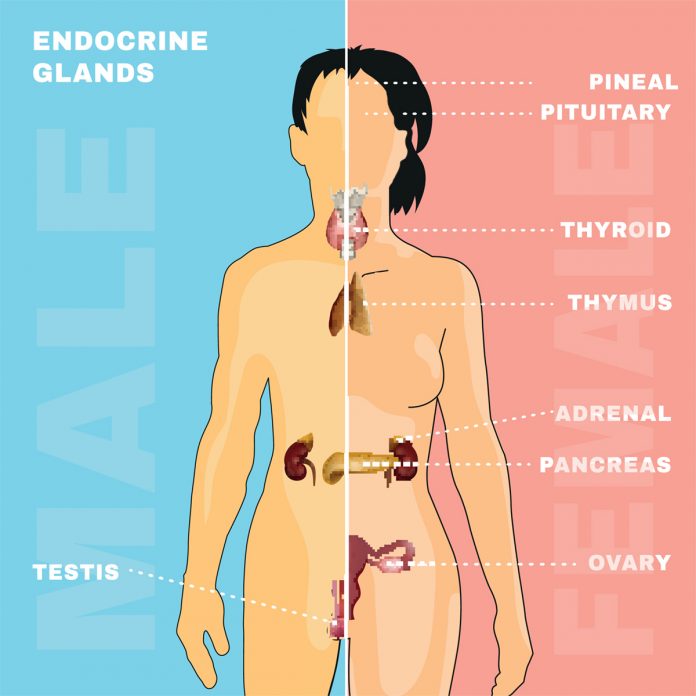
Alberto Mantovani of Italy’s Istituto Superiore di Sanità assesses the European Commission’s efforts to develop a comprehensive and concise regulatory framework for endocrine-disrupting chemical substances
In June, an important public consultation took place: the European Commission (EC) sought feedback on its roadmap, Towards a More Comprehensive EU Framework on Endocrine Disruptors.
Endocrine-disrupting (ED) chemical substances alter the functions of the hormonal system and consequently cause adverse effects. As we already discussed in previous articles on Open Access Government, ED are a hot issue in the global scenario of chemical safety, due to multiple hazards, widespread exposure and the numerous uncertainties that hinder risk assessment and management.
The EC has acknowledged that ED are a main issue to protect human health and environmental quality since at least 2004 (the launch of the first EU Environment & Health Strategy). Nevertheless, the EC has been much criticised by stakeholders, such as environmentalist organisations and some Member States (for example, France and Sweden) because of its perceived slowness to take action.
Such criticisms were largely justified, even though ED are relevant to a broad range of regulatory fields (pesticides, biocides, environmental contaminants, food packaging, cosmetics, occupational health, etc.) Thus, taking effective and consistent action toward ED may be rather complex.
Nevertheless, in the last three years, the ED issue has started to move at an increasing speed, spearheaded by the new regulatory framework of pesticides and biocides.
The new Communication from the EC sets out the ambition to provide a comprehensive, yet concise, EU framework on ED, describing key issues, taking stock of present achievements and outlining concrete steps for the future.
The Communication received 44 comments from institutions, associations and individual scientists. Some comments were quite strong, as – in my opinion – they failed to recognise that this Communication represents a step forward.
Unfortunately, most comments came from a narrow group of countries of Central and Northern Europe, as a significant part of the EU seems to be weakly involved in the debate.
We (the Italian National Health Institute, Dept of Food Safety, nutrition, veterinary public health) considered that overall, the roadmap can be a good (yet slow-coming) compromise among different driving forces. Our comments came from a careful reading of the draft text because a devil might hide in the details.
In the section ‘Problem the Initiative Aims to Tackle’ (page 2 of the Communication), one point states: “Science on endocrine disruptors progresses quickly, but there are a number of scientific aspects that are not entirely understood.”
The main research issue of concern for health services and citizens is the potential (and plausible) role of ED in some major public health issues such as cancer (breast, thyroid, testis) or diabetes and metabolic syndrome.
In our opinion, pointing out the potential involvement of ED in major public health problems, and the need for a science-based answer to the related concerns will strengthen the relevance of the actions foreseen in the roadmap for the benefit of all EU citizens, beyond the domain of chemical regulation.
Even more important, in the same section we strongly recommend avoiding the wording “extraordinary complexity” in regard to the concerns raised by ED: it seems to recall a hopeless situation which might only be dealt with either through straight precaution or by overlooking the problem. The consistent message of the roadmap should be that more science, science providing effective inputs into the regulations and policies targeted to protection goals are expected to minimise the ED-related risks for health and environment.
Coming to ‘What Does the Initiative Aim to Achieve and How’ (page 3), we consider that there is a missing element between the two (well-defined) goals namely, addressing knowledge gaps and linking science and regulation. This additional goal can be identified as a robust and consistent testing and assessment strategy for ED, ensuring the adequate power to predict hazards for health and environment and reducing uncertainties. By making full avail of knowledge and technologies, testing can also be more efficient, ie, more cost- and time-effective, hence, delivering earlier responses to the requests by regulators, policymakers and the public.
In fact, the development of more predictive, more efficient and uncertainty-lowering strategies is the main link between research and regulation, as well as a requirement for implementing the EU regulation on chemicals REACH.
A further goal states that “the EU legislative framework is adequately implemented and remains fit for purpose” (page 3). Under this respect, the roadmap has to make avail of the essential concept of “One Substance – One toxicology”: the same criteria for hazard identification/characterisation must be used throughout the different regulatory schemes.
In practice, the same substance may fall under different legislative domains, for instance: pesticide, biocide, industrial intermediate and water contaminant.
Irrespective of specific decisions related to legislation and exposure, this substance should be consistently identified as ED or non-ED across the different regulatory domains.
A more general point is the recognition of ED as a global health topic, as endorsed also by the United Nations Environmental Programme (UNEP). The EU currently has a leading role in the regulatory action on EDC and a tight collaboration with OECD on the development of testing strategies.
Further to OECD, the EU roadmap should look toward broader international cooperation with countries that are major players in the global market, as well as in most research fields (including toxicology); yet these countries still have a limited presence in the international debate on ED. Examples include Russia, China, Brazil and India or world areas such as the Middle East or sub-Saharan Africa. Making use of its agencies (ECHA, EFSA), the EU could play a significant role in more inclusive international action on EDC.
Last but not least, a critical aspect is to define the level of evidence that is sufficient to trigger action. This is an important issue for all stakeholders and should have due visibility in the roadmap.
Research is slowly but steadily tackling the many uncertainties that lead to postponing regulatory decisions: the time comes when regulators have adequate information and tools in order to make science-based decisions to protect the public and the environment. So, when is enough, enough?
Please note: this is a commercial profile
Alberto Mantovani
Research Director
Istituto Superiore di Sanità – Roma, Italy
Tel: +39 06 4990 2815










